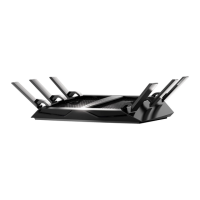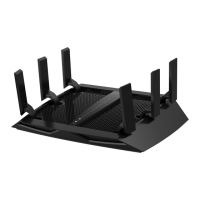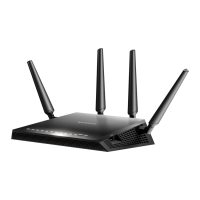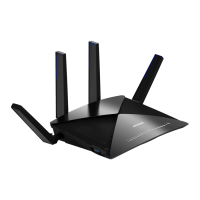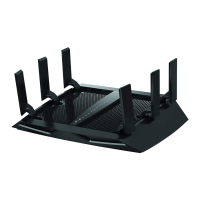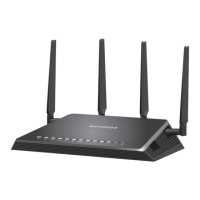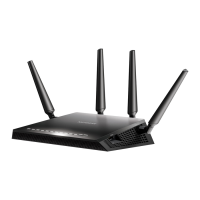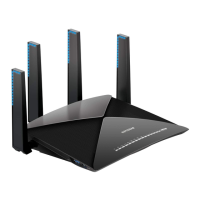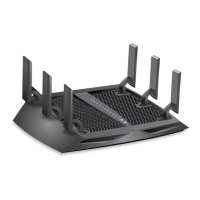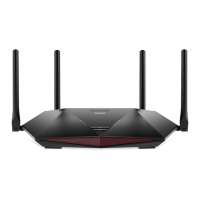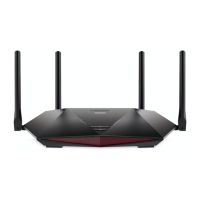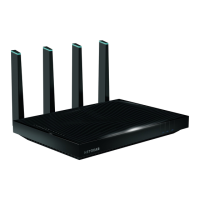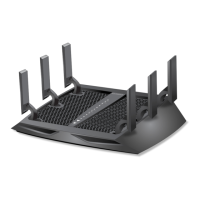
Do you have a question about the NETGEAR Nighthawk X6 R8000 and is the answer not in the manual?
| WiFi Speed | AC3200 (600 + 1300 + 1300 Mbps) |
|---|---|
| Memory | 128 MB Flash and 256 MB RAM |
| Beamforming | Yes |
| Dynamic QoS | Yes |
| Smart Connect | Yes |
| VPN Support | Yes |
| Guest Network Access | Yes |
| Parental Controls | Yes |
| WiFi Technology | 802.11ac |
| Processor | Dual Core 1GHz |
| Antennas | 6 external antennas |
| Ports | 1 USB 3.0, 1 USB 2.0 |
Instructions for unpacking the router and identifying package contents.
Guide on positioning router antennas for optimal WiFi performance.
Step-by-step instructions for connecting the router to the modem and power.
Methods for connecting devices to the router via wired Ethernet or WiFi.
How to access the router's interface via a web browser for configuration.
How to use the wizard to automatically detect and configure Internet settings.
Guide to manually configuring Internet connection settings without a login.
Steps to configure Internet settings when a login and password are required.
Configuring parental controls to filter internet content and manage access.
Setting up access control rules to permit or deny device connections to the network.
Explanation of tri-band WiFi technology and its benefits for speed and performance.
How Smart Connect intelligently assigns devices to WiFi bands for optimal performance.
How beamforming technology improves WiFi range and performance by directing signals.
How to connect and access USB storage devices shared on the network via ReadySHARE.
How to access USB devices remotely over the Internet.
Explanation of Dynamic DNS and its role in remote network access.
Using Dynamic DNS to set up a personal FTP server for remote file access.
Configuring the router to act as a DLNA/UPnP AV media server.
Installing printer drivers and connecting a USB printer to the router.
Installing the ReadySHARE Printer Utility and NETGEAR USB Control Center.
Modifying the router's Local Area Network (LAN) IP address and subnet mask.
Configuring the DHCP server to assign IP addresses within a specific range.
Configuring basic wireless settings like SSID, security, and channel.
Changing the WiFi network password and security protocol (WPA2/WPA).
Checking for and installing new firmware updates for the router.
Changing the router's administrative login password for security.
Setting up and using password recovery options if the admin password is forgotten.
Establishing a secure Virtual Private Network (VPN) connection to access the network remotely.
Opening a VPN tunnel from a computer to the router for secure remote access.
Routing internet traffic through the home network via VPN when away.
Configuring port forwarding to allow incoming traffic to reach specific local servers.
Diagnosing router issues by interpreting the status of the LED indicators.
Steps to resolve issues preventing login to the router's interface.
Steps to diagnose and fix problems preventing internet access.
